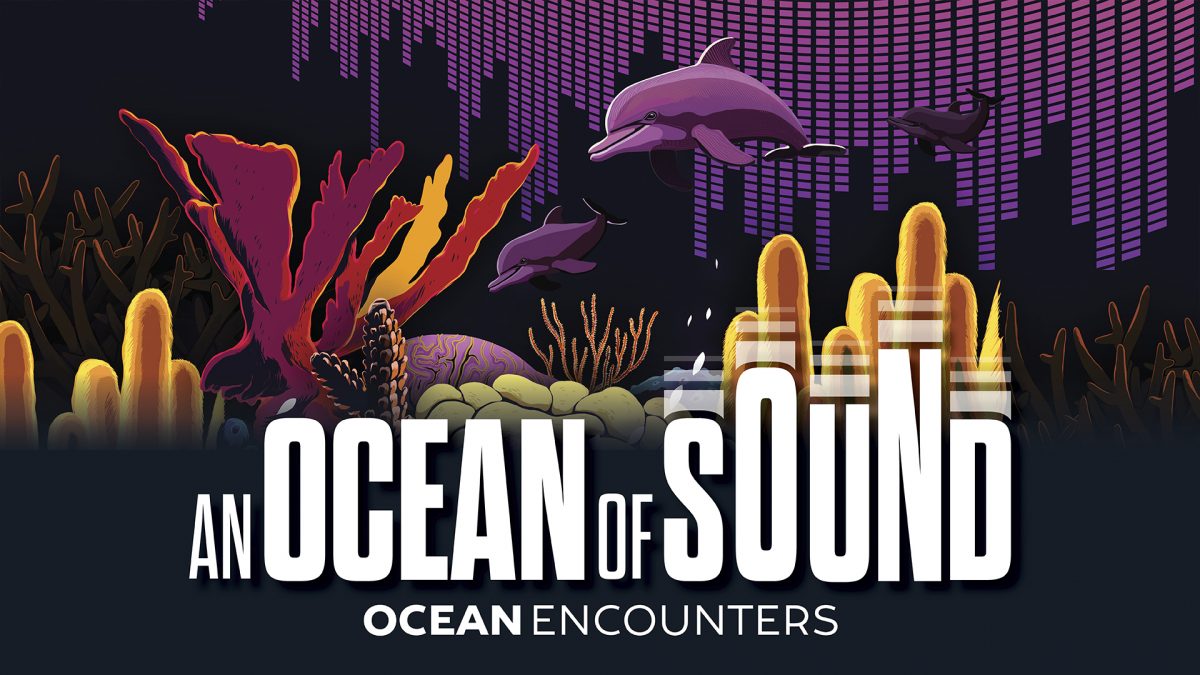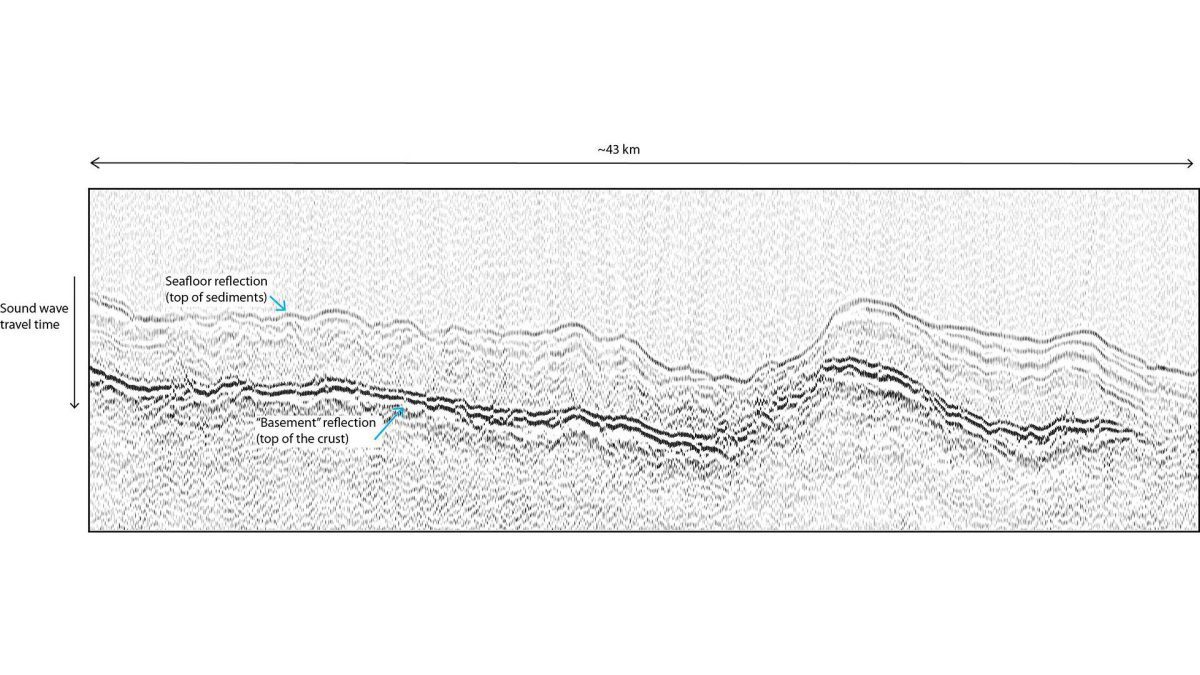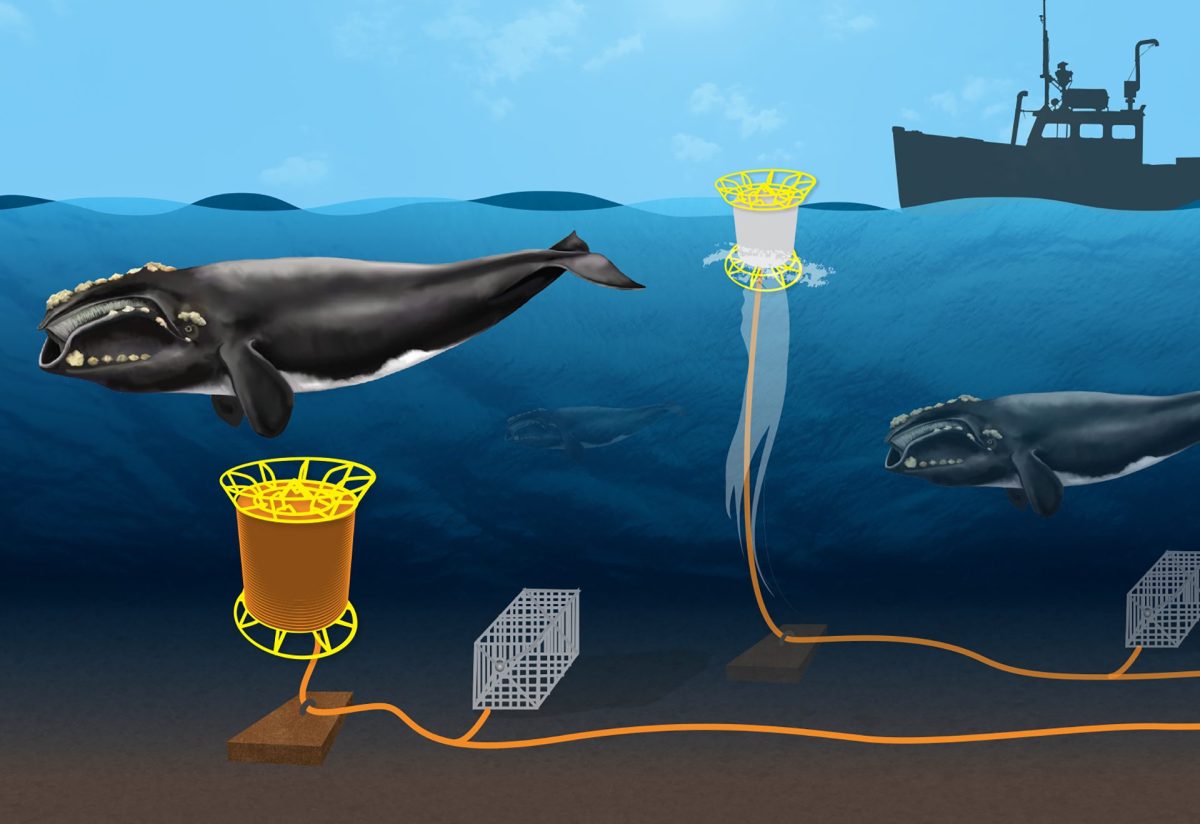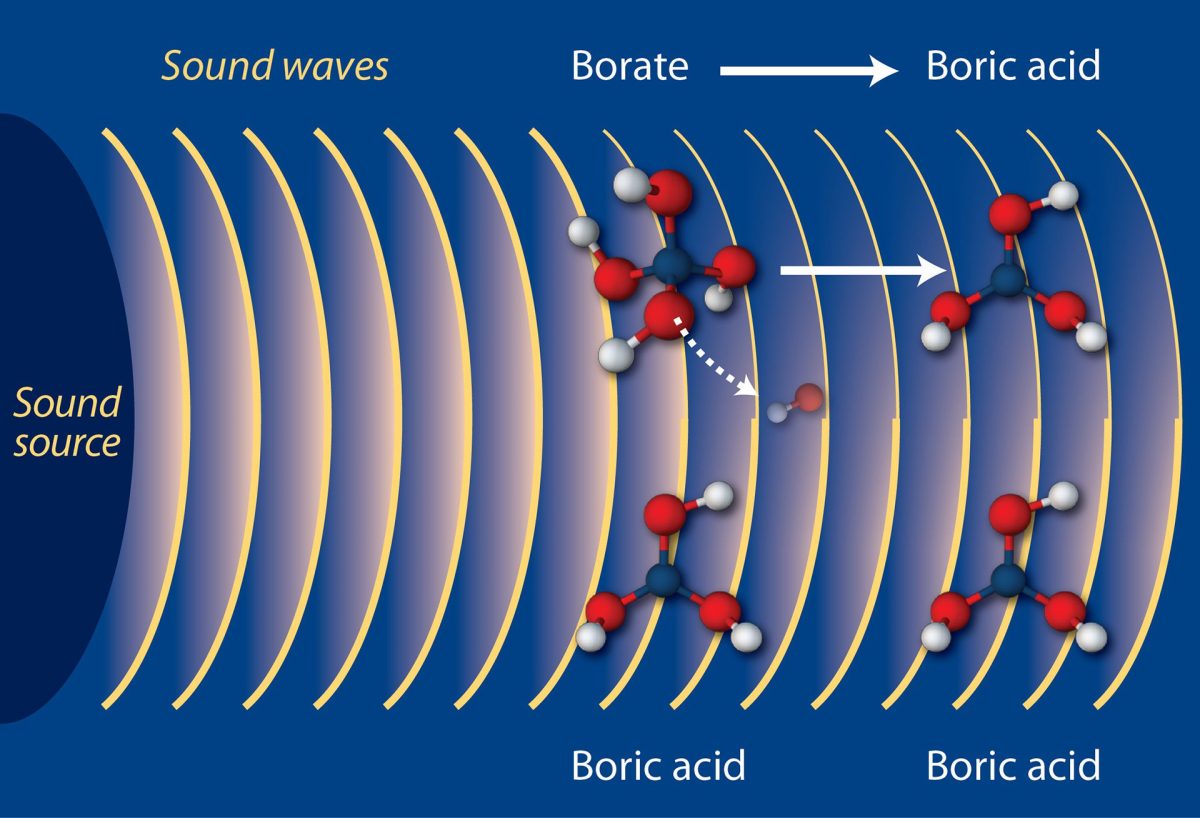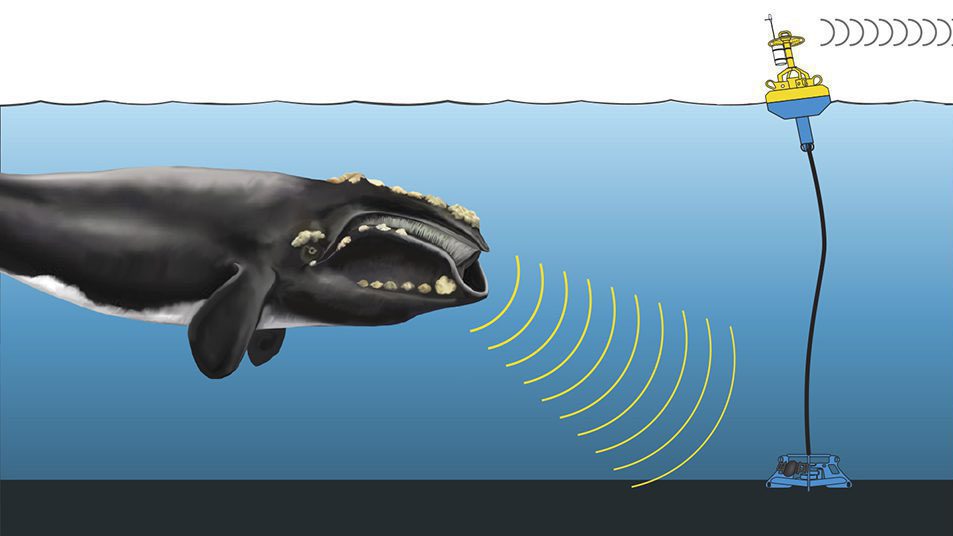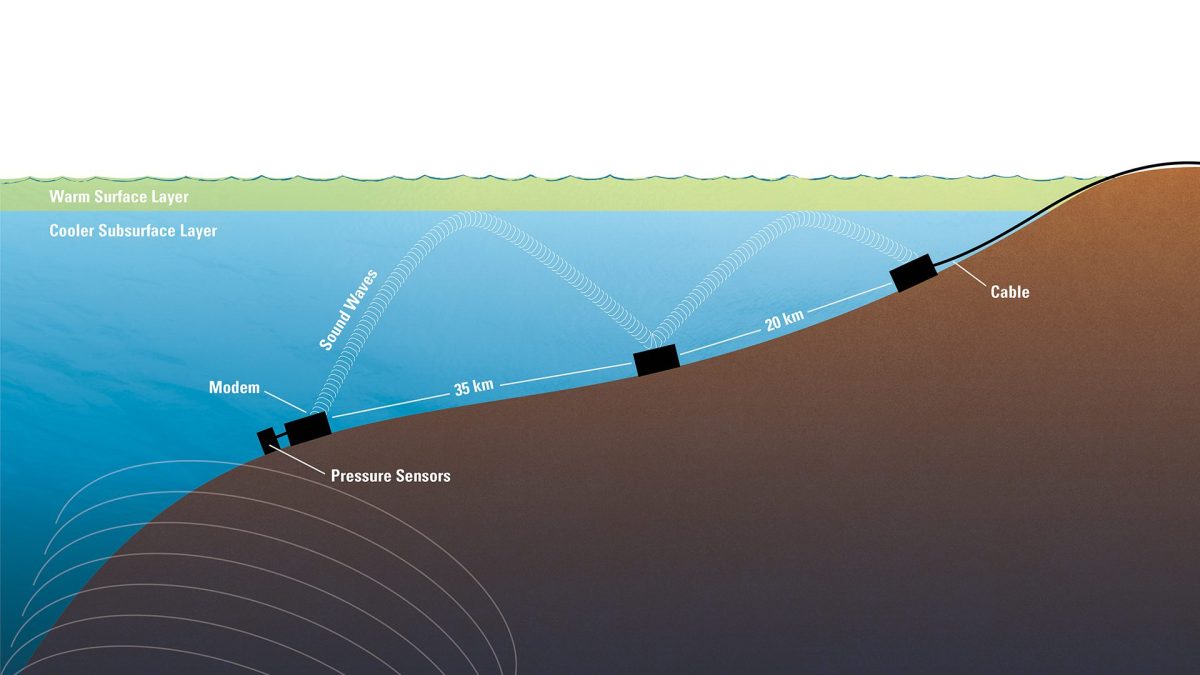In this section
Ocean Topics
- Climate & Weather
- How the Ocean Works
- Ocean & Human Lives
- Ocean Life
- Sustainable Ocean
- Ocean Tech
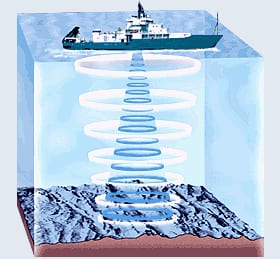
(Woods Hole Oceanographic Institution)
Echo sounding is the key method scientists use to map the seafloor today. The technique, first used by German scientists in the early 20th century, uses sound waves bounced off the ocean bottom.
Echo sounders aboard ships have components called transducers that both transmit and receive sound waves. Transducers send a cone of sound down to the seafloor, which reflects back to the ship. Just like a flashlight beam, the cone of sound will focus on a relatively small area in places where the ocean is shallow, or spread out over the size of a football field when water depths reach 3,000 meters. The returned echo is received by the transducer, amplified electronically, and recorded on graphic recorders.
The time taken for the sound to travel through the ocean and back is then used to calculate water depths. The faster the sound waves return, the smaller the water depths and the higher the elevation of the seafloor. Echo sounders repeatedly “ping” the seafloor as a ship moves along the surface, producing a continuous line showing ocean depths directly beneath the ship.
In the early days of ocean exploration until as recently as 20 years ago, marine geologists wrote down individual readings from recorders, plotted them on navigation charts showing their ship’s position, and then drew contour lines joining points of equal depth. In this way, they produced “bathymetry maps” that displayed the ocean’s changing water depths (and hence changes in seafloor elevation). These charts were accurate only within about 20-50 m, but that was good enough for scientists to discover the mid-ocean ridge system in the Atlantic and Pacific Oceans.
Echo sounders use different frequencies of sound to find out different things about the seafloor. Scientists typically use echo sounders that transmit sound at 12 kiloHertz (kHz) to determine how far down the seafloor lies. However, they use a lower frequency (3.5 kHz) sound, which penetrates the seafloor, if they want to “see” accumulated layers of sediments below it.
Articles Related to Sonar Single Beam
From Oceanus Magazine
A polar stethoscope
How WHOI helped win World War II
Learning to see through cloudy waters
A curious robot is poised to rapidly expand reef research
Whale Safe
Measuring the great migration
WHOI breaks in new research facility with MURAL Hack-A-Thon
Bioacoustic alarms are sounding on Cape Cod
A tunnel to the Twilight Zone
News Releases
WHOI’s Jennifer Johnson receives Fulbright Specialist Award
Sonic Youth: Healthy Reef Sounds Increase Coral Settlement
WHOI researcher dives to Challenger Deep
Groups of Pilot Whales Have Their Own Dialects
Coral Larvae Use Sound to Find a Home on the Reef
Now in Broadband: Acoustic Imaging of the Ocean
News & Insights
Could listening to the deep sea help save it?
For Mark Baumgartner, Whale Safe is the natural evolution of WHOI’s work with passive acoustics
Listening to fish with passive acoustics
Teaming up for right whales
Underwater robots swarm the ocean
WHOI in the News
New technology tries to protect whales
Humpback whale songs provide insight to population changes
Sea Ahead
Acoustics of the deep sea tell us about biodiversity
Could Listening to the Deep Help Save it?
New Technology Can Save the Whales from Ship Collisions
New Technology Will Listen For Underwater Whale Traffic In An Effort To Reduce Ship Strikes
Scientists to discuss decline in right whale population
Features
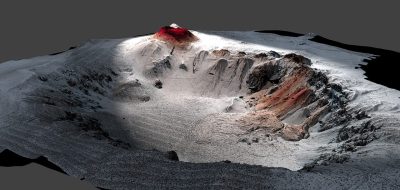
A strong understanding of how sound behaves in different conditions in the ocean helps scientists answer fundamental questions about the…
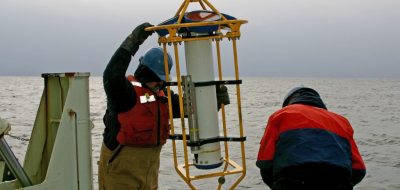
An Acoustic Doppler Current Profiler (ADCP) uses sound waves to measure water current speed at multiple depths, helping scientists study…

Multibeam bathymetry is based on the fact that more beams are better than one. About 30 years ago, the US…
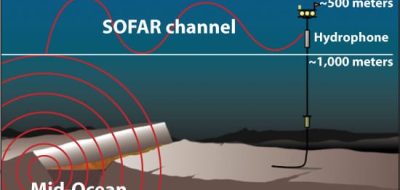
Hydrophone arrays "hear and record sound waves generated by seismic events, submarines, or whales, and are installed in places that…


